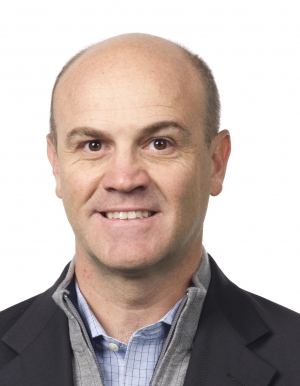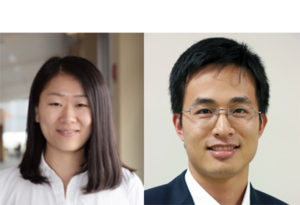 Due to the hierarchical nature of high-temperature hydrocarbon oxidation, modeling the combustion chemistry of higher hydrocarbon fuels typically requires a fuel-specific reaction model that describes the fragmentation of the fuel into small species, and a foundational fuel chemistry model that describes the oxidation of these species. Shared by the combustion of large hydrocarbons, the foundational fuel chemistry is also the rate-limiting step and therefore a crucial part for constructing reliable combustion models for any higher hydrocarbons. The talk examines the aforementioned problems from both ends. The Foundational Fuel Chemistry Model (FFCM) is an effort directed at developing a reliable combustion model for the foundational fuels with rate parameters optimized and uncertainty minimized. The first version, FFCM-1,optimized for H2,H2/CO,CH2O and CH4 combustion,was constrained with carefully evaluated fundamental combustion data. The model reconciles all the experimental targets chosen and has significantly reduced prediction uncertainties. The remaining kinetic uncertainties in FFCM-1 were further analyzed with extinction and ignition residence time predictions in perfectly-stirred reactor conditions to examine the critical remaining kinetic uncertainties in FFCM-1. The optimization and uncertainty quantification procedures were also extended to include the optimization of activation energies. As a single-component large-fuel example, JP10 was studied using the Hybrid Chemistry (HyChem) approach, which assumes a decoupled fuel pyrolysis and oxidation of pyrolysis products. The pyrolysis model is described with highly-lumped steps and optimized against experimental data from shock tube and flow reactor measurements. The model performance will be discussed.
Due to the hierarchical nature of high-temperature hydrocarbon oxidation, modeling the combustion chemistry of higher hydrocarbon fuels typically requires a fuel-specific reaction model that describes the fragmentation of the fuel into small species, and a foundational fuel chemistry model that describes the oxidation of these species. Shared by the combustion of large hydrocarbons, the foundational fuel chemistry is also the rate-limiting step and therefore a crucial part for constructing reliable combustion models for any higher hydrocarbons. The talk examines the aforementioned problems from both ends. The Foundational Fuel Chemistry Model (FFCM) is an effort directed at developing a reliable combustion model for the foundational fuels with rate parameters optimized and uncertainty minimized. The first version, FFCM-1,optimized for H2,H2/CO,CH2O and CH4 combustion,was constrained with carefully evaluated fundamental combustion data. The model reconciles all the experimental targets chosen and has significantly reduced prediction uncertainties. The remaining kinetic uncertainties in FFCM-1 were further analyzed with extinction and ignition residence time predictions in perfectly-stirred reactor conditions to examine the critical remaining kinetic uncertainties in FFCM-1. The optimization and uncertainty quantification procedures were also extended to include the optimization of activation energies. As a single-component large-fuel example, JP10 was studied using the Hybrid Chemistry (HyChem) approach, which assumes a decoupled fuel pyrolysis and oxidation of pyrolysis products. The pyrolysis model is described with highly-lumped steps and optimized against experimental data from shock tube and flow reactor measurements. The model performance will be discussed.
Month: September 2018
Metastructures For Wave And Vibration Control: Internal Resonances, Edge States and Quasi-periodicity
 Beyond the mere notion of a material, metastructures draw their unique characteristics from their finite size and the existence of interfaces. The resulting structural assemblies feature unprecedented performance in terms of stress wave mitigation, wave guiding, acoustic absorption, and vibration isolation.
Beyond the mere notion of a material, metastructures draw their unique characteristics from their finite size and the existence of interfaces. The resulting structural assemblies feature unprecedented performance in terms of stress wave mitigation, wave guiding, acoustic absorption, and vibration isolation.
The talk illustrates the frequency-selective properties of periodic metastructures, which result in their ability to direct waves in preferential direction and attenuate vibrations at certain frequencies. Such properties are observed in complex structural lattices, and in structural components equipped with periodic arrays of adaptive electromechanical resonators. The presentation will also introduce basic concepts that govern the onset of localized, interface wave modes. Specifically, spring-mass systems, lattices, and plates with internal resonators will be presented as part of a framework that seeks for mechanical lattices that exhibit one-way, edge-bound, defect-immune, wave motion. Finally, quasi-periodic structural assemblies are introduced as configurations that support vibration confinement in systems that are not ordered, but are described by deterministic property distributions. Results for beam and plate structures with quasiperiodic arrangements of grounding springs and lumped masses are presented to illustrate the unique dynamic behavior characterized by a multitude of highly localized modes of vibration.
Biographical Sketch: Massimo Ruzzene is the Pratt and Whitney Professor in the Schools of Aerospace and Mechanical Engineering at Georgia Institute of Technology. He received a PhD in Mechanical Engineering from the Politecnico di Torino (Italy) in 1999. He is author of 2 books, more than 160 journal papers and 200 conference papers. He has participated as a PI or co-PI in various research projects funded by the Air Force Office of Scientific Research (AFOSR), the Army Research Office (ARO), the Office of Naval Research (ONR), NASA, the US Army, US Navy, DARPA, the National Science Foundation (NSF), as well as companies such as Boeing, Eurocopter, Raytheon, Corning and TRW. Most of his current and past research work has focused on solid mechanics, structural dynamics and wave propagation with application to structural health monitoring, metamaterials, and vibration and noise control. M. Ruzzene is a Fellow of ASME, an Associate Fellow of AIAA, and a member of AHS, and ASA. He served as Program Director for the Dynamics, Control and System Diagnostics Program of CMMI at the National Science Foundation between 2014 and 2016.
Dan Wang and Professor Xu Chen win Best Paper Award at the 2018 International Symposium on Flexible Automation
 ME graduate student Dan Wang and Professor Xu Chen won the Best Paper (Theory) of the 2018 International Symposium on Flexible Automation (ISFA) for their paper titled “Synthesis and Analysis of Multirate Repetitive Control for Fractional-order Periodic Disturbance Rejection in Powder Bed Fusion.”
ME graduate student Dan Wang and Professor Xu Chen won the Best Paper (Theory) of the 2018 International Symposium on Flexible Automation (ISFA) for their paper titled “Synthesis and Analysis of Multirate Repetitive Control for Fractional-order Periodic Disturbance Rejection in Powder Bed Fusion.”
The ISFA started in 1986 under the co-sponsorship of the American Society of Mechanical Engineers (ASME) and the Institute of Systems, Control and Information Engineers (ISCIE) in Japan. The symposium focuses on automation technologies that are essential to meet the increasing requirements of modern manufacturing and other related fields, such as dynamical systems, robotics, logistics, biomedical systems, and healthcare systems.
The 2018 symposium was held in Kanazawa, Japan from July 15 to July 19. Every year the symposium recognizes two best papers appearing in the Proceedings and presented at the Symposium. One award emphasizes contribution to theory, and the other emphasizes significant or innovative applications/practice. Criteria for selection include the quality of the written and oral presentation, the technical contribution, timeliness, and practicality. Each award consists of a certificate and an honorarium of $1,000.
Wang and Chen’s paper discusses control approaches to advance the quality of repetitive energy deposition in powder bed fusion (PBF) additive manufacturing, pertaining specifically to the repetitive deposition of the laser or electron beam energy. It addresses an intrinsic limitation in control schemes that can leverage the periodicity of task patterns to significantly improve system performance. The long-term impacts will include greater quality assurance of the manufactured parts, new capabilities for large-scale 3D printing of extreme materials, and smarter machines and automation in additive manufacturing processes.